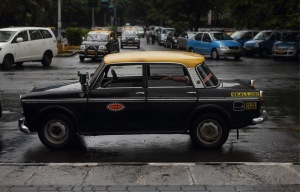Blog Archives
Tackling errant auto and taxi drivers refusing to ply.

The public transport service is for the benefit of the people, this aspect is totally lost sight of by regulatory authorities and the service provider unions. Though periodic crackdowns by the traffic police and the RTO against errant taxi and rickshaw drivers who refuse to ply are commendable and a step in the right direction, a more holistic approach is required to solve this issue effectively. We do endorse the present action however, it is important to have a balanced view in the interest of public and the people who are affected and connected to the service
Our suggestion is as under
- The taxis and rickshaws should never refuse
- Authorities need to be very strict against offenders
- Providing each vehicle (taxis and auto rickshaws) an identification card mentioning the working time and lunch/break times explicitly. This card should always be present in the vehicle.
- It is equally important that specific regulations are framed for compliance taking care of all the stakeholders.
We are taking up the issue with the government authorities and the service provider unions directly and also shall request media to help create awareness and pressure on the authorities.
We look forward to your suggestion and support to take up better governance for stopping such incidents.
You can send your suggestions to info@theroadtochange.org.in or provide them in this google form https://docs.google.com/a/theroadtochange.org.in/forms/d/1yB1jHwcdYuMUcCBn7si2XWucaDYRm9AeGb7o4_aknxI/viewform
Steps taken in other countries for effective traffic management – Part 1
An estimated 1.2 million die, and 50 million get injured, each year due to flaws in traffic and road management systems – and this is no less than a catastrophe! Road injuries were the ninth-leading cause of death the world over in 2004, and the World Health Organization (WHO) estimates that, by 2020, they will be “the third highest threat to public life.” If proven true, they will be a threat more serious and dangerous than HIV/AIDS. As such, it has become the need of the hour to implement a more systematic approach to traffic – Road Traffic Management. Firstly, we must recognize the importance of regulating public transport and road traffic. Once key areas are identified, effective measures must be swiftly taken towards the implementation of the plan. By observing the road safety practices of other countries, we can better realize our needs, and identify the measures, that need to be taken with some immediacy:
Europe’s Road Safety Days: Every country has its unique design of traffic management, suitable to its roads and vehicles. In the UK, Malta, Ireland, etc. traffic mainly drives on the left, whereas it is largely the other way round in the rest of Europe. The continent practices ‘Europe’s Road Safety Days’ – a great opportunity to work towards road safety, with many of the youth actively participating, by targeting themes such as alcohol, drugs and education. The first European Road Safety Day was celebrated on 27th April, 2007 – in tandem with the United Nations’ Global Road Safety Week, being commemorated from the 23rd to the 29th of April of the same year.
New York City institutes infrastructure for pedestrians: USA’s safest city is a threat to pedestrians, and research points out that it urgently requires better infrastructure for their safety. To this end, pedestrian countdown signals are being installed, and some busy street are being re-engineered.
England’s town has no traffic lights!: The English town of Portishead, about 120 miles west of London, had an interesting experiment. They turned off the traffic lights on a major road in September, 2009. The four-week study, to solve long-standing congestion at the junction, was not only unique, but also successful. In the trial period, roads were monitored using cameras to see the impact switched-off traffic signals would have on congestion. It turned out that drivers were forced to pay more attention to other vehicles, and pedestrians. And, obviously enough, there were considerable savings on the maintenance of traffic lights.
Kenya says, “Rewards for speeding!”: Nairobi, working closely with the Kenya Red Cross, carried out a radically distinctive workshop for road safety. They said, “Wear a helmet, and speed!” This brought into focus new revelations on specific risks associated with speeding. Techniques are now being developed to counter them.
To conclude, it can be said that innovative techniques of Road Traffic Management maybe easier to implement and more effective. Accidents are rising at an alarming rate, and, more than anything, it is the citizens’ awareness, and active participation, that will help curb the menace. “Precaution is better than cure” is a commonly-used adage, but the question that arises is, “How often do you practice it?”
